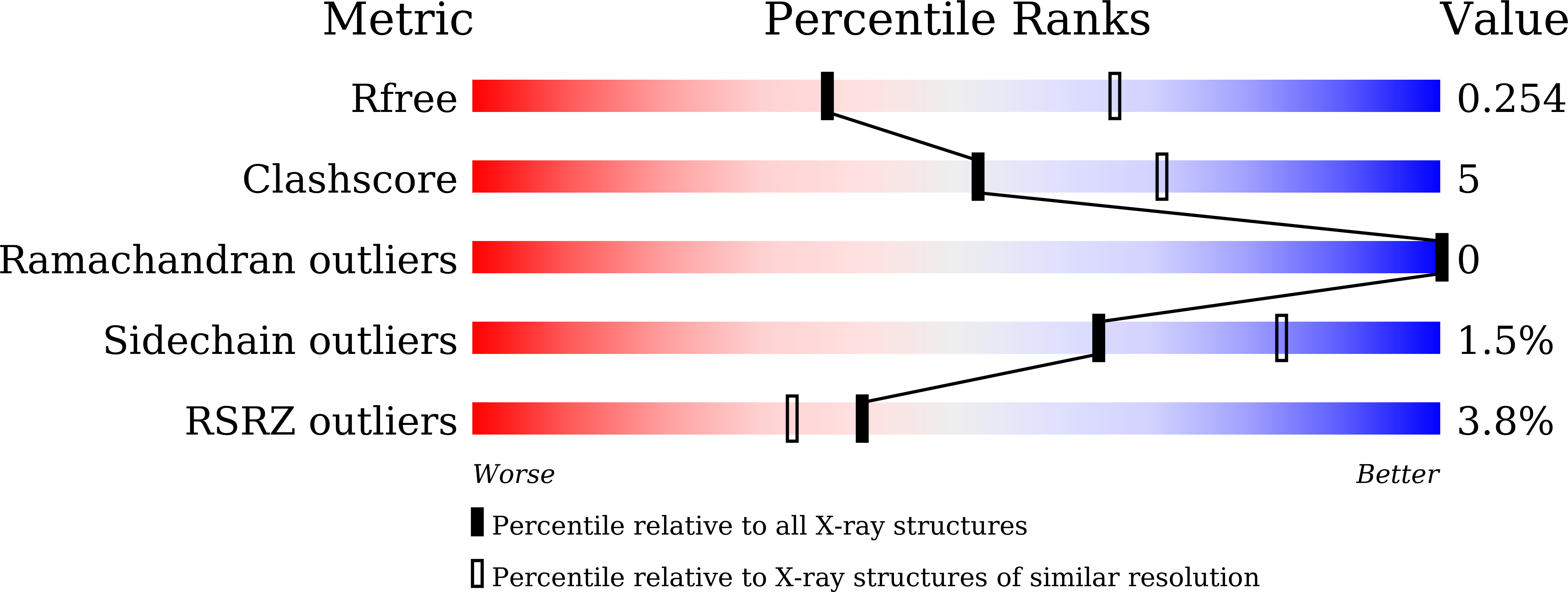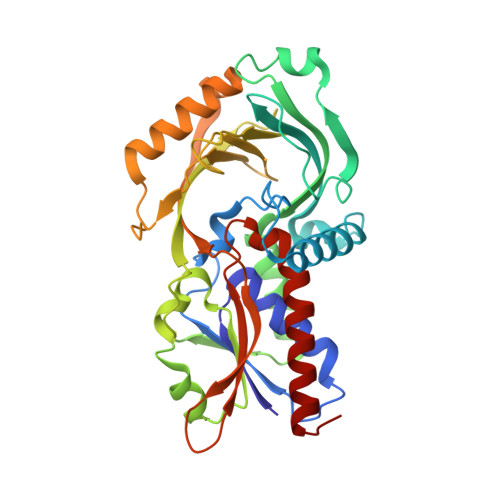Structural basis for potent inhibition of d-amino acid oxidase by thiophene carboxylic acids
Kato, Y., Hin, N., Maita, N., Thomas, A.G., Kurosawa, S., Rojas, C., Yorita, K., Slusher, B.S., Fukui, K., Tsukamoto, T.(2018) Eur J Med Chem 159: 23-34
- PubMed: 30265959
- DOI: https://doi.org/10.1016/j.ejmech.2018.09.040
- Primary Citation of Related Structures:
5ZJ9, 5ZJA - PubMed Abstract:
A series of thiophene-2-carboxylic acids and thiophene-3-carboxylic acids were identified as a new class of DAO inhibitors. Structure-activity relationship (SAR) studies revealed that small substituents are well-tolerated on the thiophene ring of both the 2-carboxylic acid and 3-carboxylic acid scaffolds. Crystal structures of human DAO in complex with potent thiophene carboxylic acids revealed that Tyr224 was tightly stacked with the thiophene ring of the inhibitors, resulting in the disappearance of the secondary pocket observed with other DAO inhibitors. Molecular dynamics simulations of the complex revealed that Tyr224 preferred the stacked conformation irrespective of whether Tyr224 was stacked or not in the initial state of the simulations. MM/GBSA indicated a substantial hydrophobic interaction between Tyr244 and the thiophene-based inhibitor. In addition, the active site was tightly closed with an extensive network of hydrogen bonds including those from Tyr224 in the stacked conformation. The introduction of a large branched side chain to the thiophene ring markedly decreased potency. These results are in marked contrast to other DAO inhibitors that can gain potency with a branched side chain extending to the secondary pocket due to Tyr224 repositioning. These insights should be of particular importance in future efforts to optimize DAO inhibitors with novel scaffolds.
Organizational Affiliation:
Institute for Enzyme Research, Tokushima University, Tokushima, 770-8503, Japan.
















